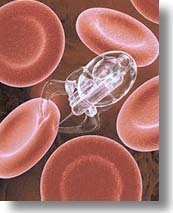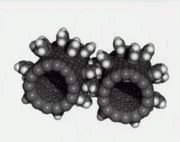Maruti Suzuki Swift 1.3 DdiS
The Swift is not just the best Maruti ever, it is also probably the best car ever sold in India. Shoehorning Fiat’s 1.3 Multijet diesel engine under the bonnet is going to take the game that much further. Suzuki will manufacture Fiat’s 1.3 Multijet engine in an all-new plant near Delhi and the first beneficiary of that will be the Swift. A massive 17kgm of torque instead of 11, long-legged cruising ability and fuel economy will have you smiling as widely as the Swift itself. Expect the car to reach 100kph in 14 seconds and attain a top speed of 165 kilometres an hour. What Maruti and Suzuki will have to get right, with the heavier engine in the nose, is the ride quality. Expect some compromise in the nippy handling of the car compared to the petrol version. What it will be particularly good at is hassle-free commuting. Despite this model qualifying for an excise sop – its diesel engine falls under 1500cc and the car is shorter than four metres – the Swift DDiS won’t be cheap as Maruti don’t want to cannibalise on the petrol model’s sales. Expect an increase of Rs 60,000 per car.
New Santro 1.1 CRDi
When Hyundai launch the Santro’s replacement in 2007, it will come with the surprise addition of a 1.1 litre common rail diesel. Likely to be the cheapest car on sale powered by a CRDi engine, this motor is the new Accent’s CRDi unit less one cylinder. Incredibly powerful for its size, this 1,120cc engine produces a whopping 75bhp. Unconfirmed reports talk of overall figures, city and highway combined, in excess of 20 kilometres a litre.
Hyundai Getz 1.5 CRDi
Not as attractive as the Swift, but more practical, with greater rear seat comfort and more useable space, Hyundai’s diesel assault continues up the range with its large hatch. The Getz will share its motors with the new Accent/ Verna. Hyundai sell the Getz powered by a detuned version of the new Accent motor in the European continent, and it’s likely to be the case here as well. Producing 87bhp as against 108bhp, using two versions of the same engine will help Hyundai get a handle on costs. The diesel Getz also qualifies for excise sops, meeting both length and engine capacity criteria.
Hyundai Accent/Verna 1.5 CRDi
This is likely to be the most impressive diesel midsize car of all. 110 power-packed horses, and a stump-pulling 24kgm of torque, it holds the promise of fantastic power and acceleration, with on-paper performance likely to match even cars like the Honda City VTEC! The new Accent is also more comfortable inside, with larger seats that are not as low slung as the current car.
Hyundai Sonata Embera 2.0 CRDi
At the top of its car range in India, Hyundai is firming up plans to give their slow-selling Sonata a diesel boost. The motor displaces only 2.0 litres, versus 2.5 for competitors like the Superb diesel, but has a new-generation common-rail system and a variable geometry turbo. The 140 horses the motor makes is not really impressive, but it does have sufficient torque – its 31kgm, available between 1800 and 2500 rpm, is enough to move much larger cars.
Renault Logan 1.5 dCi
Mahindra and Renault are likely to shake up the mid-size pack when they unveil their aggressively priced diesel Logan. Know as the 1.5 dCi, this unit has been specifically tuned to deliver great fuel economy. Mahindra of course, have done their homework well. Expected to be the leader in the fuel economy stakes, this second-generation common-rail motor was chosen for its robust nature and its unique injector calibration and lifelong pre-injection control. Producing 70bhp and using a low-inertia turbo for good low speed response, this engine is also likely to make the Logan good for traffic use.
Mahindra Scorpio 2.2 CRDe
Mahindra, like Tata are in the process of developing an all-new common rail motor for their Scorpio. Also displacing 2.2 litres and developed in collaboration with AVL, this engine is primarily being developed to cover the humble origins of the Scorpio’s overweight motor. Using a high-pressure system designed by Bosch, the new motor should put out anywhere between 130 and 140bhp.
Toyota Corolla D-4D
Skoda and Honda better take cover. Come 2008, the new Toyota Corolla will offer a diesel option. A new version of the 2.0 D-4D powerplant currently sold in Europe is slated to go under the hood of Toyota’s fresh car. Currently producing 116bhp and 28.5kgm of torque, this motor is likely to have more that sufficient power for the Corolla’s requirements.
New Tata Indica 1.3 Multijet
By the time the larger new Indica is out, the Tata-Fiat tie-up will be going full throttle. Tata will borrow engines from Fiat with, you guessed it, the 1.3 litre Multijet being the engine of choice. Thoroughly localised, cheaply assembled and very capable, it will give the new Indica/ Indigo family a huge leap forward as far as overall ability is concerned.
Chevrolet Aveo 1.3 Multijet
The GM–FIAT joint venture may be off, but the former still has access to Fiat’s engines. Yet another manufacturer to use the 1.3 Multijet, the Aveo saloon powered by Fiat’s motor will take on Ford’s Fiesta and the Hyundai Accent for diesel saloon honours. GM India is currently in the process of piecing this one together.
Tata Indigo/ Marina DiCOR 1.4
A Tata engine that has been a long time coming – the DiCOR version of the Indigo/Indica motor – has been on the cards for a couple of years now. Euro IV norms will hasten its introduction both at home as well as abroad, and that is good news. The motor features a new head as well as intake system and the unit is expected in both 70 and 90bhp guises.
Tata Safari DiCOR 2.2
Tata may have a CRDi motor under the hood of the Safari and they may have only recently launched it, but there is another one on the way. The problem is that the current DiCOR motor has its origins in commercial applications – it was a truck engine to begin with, and this means far-from-satisfactory refinement and power delivery. A new 2.2-litre replacement is being prepared in conjunction with AVL of Austria will be put to use before Euro IV norms come into force in Jan 2007.
Chevrolet Captiva 2.0 VCDI
This handsome seven-seater SUV with a 150bhp common rail diesel engine is a product of GM-Daewoo. The Captiva seems like a perfect plan to upset the CR-V’s party. The two-litre unit in its nose is expected to be both refined and have good torque, 31.6kgm the figure quoted for pulling power. The engine has been designed by VM Motori of Italy and GM Powertrain.
Ford Endeavour 2.5 TD
Another Ford desperately awaiting a modern diesel, the tough-looking Endeavour will get both a new common-rail motor as well as fresh looks. The CRDi motor will put out an impressive 143bhp and use a variable geometry turbine. Torque output is an impressive 33kgm and engine will use a dual mass flywheel for better refinement and balance.
Ford Fusion 1.4 TDCi
Ford’s ‘anything karega’ car missed the diesel trick when it was launched, so slotting the Fiesta TDCi motor under the hood is likely to be the most important weapon in the Fusion’s arsenal. Outstanding refinement and good cruising ability should be boosted by a slightly elevated state of tune and shorter more appropriate gearing. This car could suddenly make so much sense.
Toyota Fortuner 3.0 D-4D
The Toyota that could have people queuing up overnight to book it, the SUV that everyone is waiting for, has been delayed yet again. But the Fortuner will be here eventually. Powered by a 3.0 litre common rail engine, larger than the one on the Innova sold here, the motor is one of Toyota’s new-gen diesels that offer super levels of refinement and pulling power.
Skoda Fabia 1.4 TDI
Skoda have made their mark in large part due to their outstanding diesel engines. The brilliant Fabia hatch, powered by a three-cylinder version of the Laura’s Pump Duse motor may be the next big thing. Qualifying for an excise sop, this car will need Skoda to step up their commitment to the Indian market and invest heavily, but the rewards are likely to be huge.
Audi Q7 3.0 TDI
Luxury car buyers want diesel too. Just ask Audi, who have been inundated with queries for the diesel version of their new Q7 SUV. Its massive bulk and two-ton kerb weight will require huge pulling power, but Audi have just the motor. A specially tuned 3.0 litre TDI motor puts out a chest thumping 51 Kgm of torque and 233 bhp.
Audi A6 3.0 TDI
Competition for Merc’s fabulous all-aluminium E280 CDI will be here in the next couple of months. Powered by the same engine under the hood of the Q7, its has 30 more bhp compared to the Merc E and promises to be a ‘special’ experience. Oh, and it’s so quick it has a Quattro system.
BMW 320d
Driving pleasure and diesel rarely go together, but this is precisely what the new BMW 3 Series diesel promises. When BMW start production in their plant near Chennai, the 163bhp 320d is likely to be one of their most popular cars. Smooth running, punchy and practical, but BMW must price the 3 right.
BMW 525d
The sharp-looking, sharp driving 5 Series will take on the A6 and the E-class, but the model expected will offer less power and torque. The straight six diesel motor however is very smooth and has excellent low speed pulling power.
Mercedes Benz ML320 Cdi
The new M Class is not likely to take the popularity of the Q7 lying down. The new, all-aluminium V6 that powers the E280 CDI will provide power here too, but in a stronger state of tune – 224bhp and 52kgm. The honed chassis, fresh looks and the super refined engine are sure to make a good package.
Mercedes Benz S320 CDi
THe best car in the world with probably the most refined diesel makes for a superb combination. But does a diesel S-class make sense? Customers think so. Diesel refinement is the only issue here, as pace will be fantastic. It is likely to be better insulated than the E, which is already a fantastic, refined car.


















